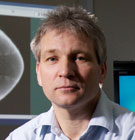Fusion energy – the potential for a sustainable, carbon-free source of energy
Posted on 6 January 2015
York's scientists are playing a role in the international quest to harness the fundamental power source of our Sun.

Fusion is the most fundamental form of energy that you could imagine…
Fusion works: we know that because the sun is a large-scale fusion reactor. “If fusion didn’t work, even the elements that we are made out of wouldn’t exist, never mind all the energy we get from the sun,” says Professor Howard Wilson, of the York Plasma Institute.
“So, fusion is the most fundamental form of energy that you could imagine, and what we are trying to do is to reproduce the fusion conditions of the sun here on earth,” he said.
Carbon-free energy
The reason for doing this is as simple as it is elusive – successful fusion would provide humankind with a sustainable, carbon-free source of energy. The raw fuels for this process are deuterium, a heavy form of hydrogen, and lithium, both of which are plentiful. “If you take the deuterium from half a bath full of sea water and the lithium that exists in a typical laptop battery, that is enough fuel to provide someone’s electricity needs for a lifetime,” Professor Wilson says.
There are hurdles to overcome before that can happen, however. Three big ones, in fact. Known to those in the fusion field as the ‘triple product’ these include the need to create temperatures ten times hotter than the sun; to do this at a sufficiently high density; and, finally, to confine the fusion fuel, which is in a highly turbulent ionised gaseous state called plasma, long enough for the fusion conditions to be established.
The extreme temperature can be achieved in fusion devices like JET in Oxfordshire, and the density is at its limit. However, the third challenge – confinement time – is proving challenging. Much of the research at York is now focused on how turbulence inside the reactor allows heat to leak out, and how that loss of heat is managed, including the role of spectacular plasma eruptions, like miniature solar flares. “If there is a Nobel Prize in fusion, it will probably be in understanding turbulence and how to quench it,” says Professor Wilson.
ITER research project
Now, along with scientists and engineers from across the globe who have joined forces to meet these challenges, the world’s policy makers are coming together in support of an experiment that is equally big and bold. Work is rapidly advancing on the construction of a €15 billion fusion energy research facility, known as ITER, which will take the scientists and engineers to the brink of reproducing the power of the sun on the Earth – ITER will produce ten times more fusion power than injected into the plasma to achieve the fusion conditions.
The seven-member ITER partnership – comprising Europe, Russia, China, the United States, India, Japan and South Korea – brings together some of the brightest and best brains in the fusion field from around the world, with York’s scientists playing an important role in this international team.
“It has often been said that fusion is 30 years away,” said Professor Wilson. “The construction of ITER in France – the largest international experimental facility on Earth – sets the clock ticking again, bringing that goal much closer. It is designed to resolve many of the remaining scientific and engineering issues surrounding fusion. With the political will and appropriate funding, fusion power to the grid could follow soon after the pioneering experiments on ITER.”
The text of this article is licensed under a Creative Commons Licence. You're free to republish it, as long as you link back to this page and credit us.

Professor Howard Wilson
Research Title: Director of York Plasma Institute
Discover the details
Find out more in the York Research Database and beyond
Article
- ELM control strategies and tools: Status and potential for ITER (Nuclear Fusion)
Research centre
- York Plasma Institute (york.ac.uk)
Visit the school
Explore more research

A research project needed to spot trees on historic ordnance survey maps, so colleagues in computer science found a solution.

We’re using gaming technology to ensure prospective teachers are fully prepared for their careers.

A low cost, high-accuracy device, could play a large part in the NHS's 'virtual wards'.
